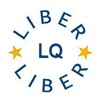How to Fit Teaching of Information Literacy in with Students’ Needs: an on-line Credit Course Model from the University of Tartu Library
DOI:
https://doi.org/10.18352/lq.8040Keywords:
teaching methods, teaching library, e-learning, information literacyAbstract
E-learning is widely acknowledged as a possible methodology to teach information literacy. Nevertheless, studies reveal that information literacy courses as separate credit-bearing courses taught entirely in the form of e-learning, and using methods of active learning, are rare. This study analyzes the performance of a model for an e-learning course in information literacy in which learners with various backgrounds can participate, and where assignments can be completed according to personal information needs. Although the course does not provide face-to-face contact, learner-centred personal guidance is applied, as every student has an instructor — a subject librarian familiar with information sources in her field. The course is based on a constructivist learning approach: active learning techniques are used and critical thinking is developed through reflection and analysis of fellow students’ assignments. The preliminary qualitative content analysis of feedback and reflections from graduates indicates that students value knowledge and skills obtained from the course. Moreover, information literacy as a course is considered necessary and guided e-learning is quite suitable for gaining information literacy. We conclude that, in order to be beneficial and valuable for students, information literacy does not necessarily have to be integrated into the teaching process of another subject. However, it should be connected with these studies, enabling students to obtain skills for information searching and learning necessary for successful graduation. At the same time, e-learning as a tool helps to promote information literacy in the academic environment in all segments of the university, integrating it with curricula.
Downloads







